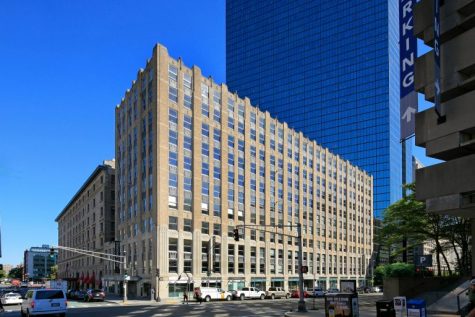College endowment experiences 3.3 percent growth despite pandemic
March 17, 2021

The COVID-19 pandemic has taken a massive financial toll on many institutions of higher education nationwide, as volatile markets have severely impacted investment returns and endowment performance. In the 2020 fiscal year, however, Williams’ Investment Office still achieved an investment return of 3.3 percent on the College’s portfolio in spite of the pandemic’s adverse effects on markets.
The performance of the endowment is critical to the operations of the College. Fifty percent of the College’s annual operating budget comes from the endowment, while the rest of the budget is composed of revenue from external philanthropic efforts and tuition. This past year, the growth of the endowment has allowed the College to maintain its commitment to meet the financial needs of all students and to provide extra funding for COVID-19 mitigation efforts.
Although the 3.3 percent return fell below the Investment Office’s goal of a 5 percent real return for the fiscal year and is down from a 9.6 percent return in 2019, the Investment Office reported satisfaction with the portfolio’s performance in light of the circumstances. “We were pleased that the Investment Pool outperformed the policy benchmark … to post a positive return in spite of the negative impacts on the economy and markets created by the COVID-19 pandemic,” the College’s annual investment report stated.
According to the report, the investment portfolio’s returns bottomed in March of 2020, following the initial shock that markets underwent due to the abrupt onset of the pandemic. In the following months, the portfolio recovered to outperform the fund’s policy benchmark (the reference point against which to measure investment returns) of -0.3% by 365 basis points (3.65%) by June 30, the end of the 2020 fiscal year.
Managing Director of the Investment Office Abigail Wattley ’05 told the Record that three crucial factors contributed to the portfolio’s recovery after the pandemic began: the diversification of the portfolio, the investment team’s decision to hold their assets, and sound investment decisions made by outside managers.
The College’s investment portfolio encompasses a diverse array of assets: illiquid and liquid, public and private, and foreign and domestic. The portfolio was able to recover from the losses incurred in March partly because it was invested in many different sectors, meaning that investments were not concentrated in any single asset.
The College experienced positive returns on venture capital, global long equity, buyouts, and global long/short equity hedge funds, outweighing negative returns in other asset classes. Positive performance in the venture capital portfolio was driven by sub-sectors that benefited from the pandemic, including e-commerce and workforce collaboration software. Two portfolios, the non-investment grade fixed income portfolio and the real assets portfolio, had negative returns because of decreases in leisure and travel spending and reduction in global demand for physical assets and commodities, respectively.
Wattley noted the geographic diversification of the portfolio, particularly how different countries’ handling of the pandemic set their relative economic performance ahead or behind the United States. She said that global diversity of assets helped to maintain the portfolio’s performance despite significant disparities in economic recovery around the world.
“Managing a portfolio is a lot like driving a barge: It takes a mile to turn, so you need to think really far ahead to be where you want to be in a mile from now,” Wattley said.
She stressed the importance of constructing a diversified portfolio in order to navigate unpredictable future circumstances. “You need to ask yourself: Have I constructed the boat well?” she said.
Wattley also attributed the portfolio’s recovery to outside managers’ decisions to stay invested in their assets during the pandemic, rather than attempt to “time” the volatile market environment by forming decisions to buy or sell assets around future predictions of market movements.
“We’re not making direct investments ourselves; we invest via outside managers,” she said. “Our team selects and monitors those managers. March 2020 was difficult; some investors would be scared and sell off and go to cash, but if we had sold, we would have missed the rally [in April, May, and June of last year]. Some managers even took the opportunity to buy [in March and April].”
Wattley said that it will be hard to understand the long-term effects of the pandemic on the College’s endowment until economies reopen. “[The] endowment is a long-term pool: investments are long-term in nature,” she said. “A year is too short to evaluate investment results. Technology is benefiting in the near-term … [but it is] too early to know if other sectors have been helped or hurt over the long term by the pandemic.”
Wattley emphasized the role of the pandemic as an accelerator of change within different sectors of the economy. “There are various outstanding questions: How has the pandemic changed our use of technology? How has it changed our desire to be in physical space?” Wattley said.
Wattley added that the endowment managers view hedge funds as a “great diversifier” to balance against recent market trends like the highly publicized short squeezes on stocks such as GME, AMC, and NOK. “Using multiple hedge funds reduces exposure to a particular investment theme, and our risk-management framework is how we are able to navigate the events that we are seeing in the market today,” she said.








